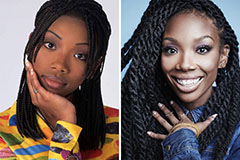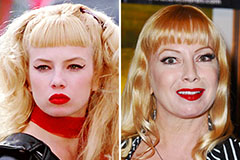Inside the digital age, storytelling has taken on new Proportions—quite actually—Together with the rise of 3D character animation. From blockbuster movies to immersive movie video games and engaging adverts, 3D character animation is currently a cornerstone of Visible storytelling. At its core, this artwork type provides digital people to daily life, enabling them to move, Convey, and interact in reasonable and emotionally resonant means.
Knowledge the Craft
3D character animation requires making movement for figures inside of a three-dimensional Place. In contrast to 2nd animation, which relies on flat drawings, 3D animation presents depth and realism to people, enabling for lifelike motions and sophisticated interactions with their environment. Animators start with a rigged model—a digital puppet with the inner skeleton—then manipulate its joints and facial capabilities to Express precise steps or feelings.
Modern-day animation program like Blender, Maya, and Cinema 4D offers a sturdy suite of tools to animate these rigs, from keyframing (setting important details of movement) to movement seize (recording Reside action to use to digital people). The end result is actually a dynamic blend of artistry and technologies.
The Role of Emotion and Performance
What will make 3D character animation significantly highly effective is its capacity to speak emotion. A subtle twitch of an eyebrow, a hesitant move, or possibly a unexpected change in posture can reveal a character’s internal globe. Animators act as both of those artists and performers, channeling the psychology of their characters by nuanced actions. This performative element is important for making believable, relatable digital personas.
In truth, many animators research acting to better recognize system language and emotion. They consider the character’s backstory, inspiration, and relationships to infuse each motion with indicating. This narrative depth sets good animations other than the basically technically proficient.
Technological Enhancements and Tendencies
The field of 3D character animation is continuously evolving. True-time animation engines like Unreal Motor have considerably sped up workflows, enabling for fast suggestions and changes. 789BET In the meantime, AI and device learning are beginning to play a task, aiding with tasks like motion prediction and automating repetitive actions.
Another interesting development would be the increasing use of motion capture and facial tracking technologies. These instruments help actors to deliver performances which might be specifically translated on to electronic people, causing hyper-real looking animations Employed in game titles like The final of Us Section II or movies like Avatar: How of H2o.
Troubles and artistic Prospects
Inspite of its technological advancements, 3D character animation continues to be a deeply Resourceful endeavor. Animators ought to strike a stability in between realism and stylization, ensuring figures are the two plausible and fascinating. They have to also adapt into a rapidly transforming market where by new equipment and methods arise frequently.
However, the opportunities are large. From animating quirky robots in commercials to crafting emotionally elaborate heroes in cinematic epics, 3D character animation provides a canvas restricted only with the creativity.
In summary, 3D character animation is a lot more than simply moving pixels—it’s the fusion of artwork, storytelling, and engineering. As instruments come to be more effective and accessible, the future of animated people looks brighter—and even more lifelike—than ever before.
 Luke Perry Then & Now!
Luke Perry Then & Now! Tahj Mowry Then & Now!
Tahj Mowry Then & Now! Brandy Then & Now!
Brandy Then & Now! Traci Lords Then & Now!
Traci Lords Then & Now! Sarah Michelle Gellar Then & Now!
Sarah Michelle Gellar Then & Now!